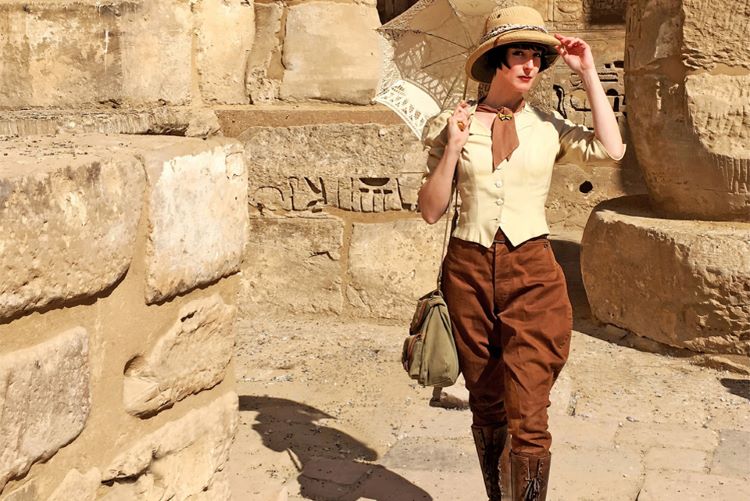It’s not often that we come across an Instagram account that is both aesthetically beautiful and educational; thankfully the days of the bathroom selfie are slowly coming to an end, but we still get excited whenever we find solid, quality content on a platform that is drowning in yoga-practicing influencers and make-up gurus.
Dr. Colleen Darnell, aka the Vintage Egyptologist, is an American Egyptologist, author and art history professor with a passion for all things vintage. Darnell blends her expertise in Ancient Egyptian history with authentic fashion from the early 1900s, taking her audience on an incredible journey, through stunning image and film, that crosses decades and borders, and even into the afterlife.
Whether it’s explaining the reliefs at Edfu dressed in an Edwardian duster, or talking about the lion-headed goddess of war, Sekhmet, in a 1920’s crochet dress, Darnell provides these amazing insights into the world of the ancient and the not-so-ancient.
Her photos and videos of Egypt trigger some major wanderlust and make it easy to remember what makes this country so special.



